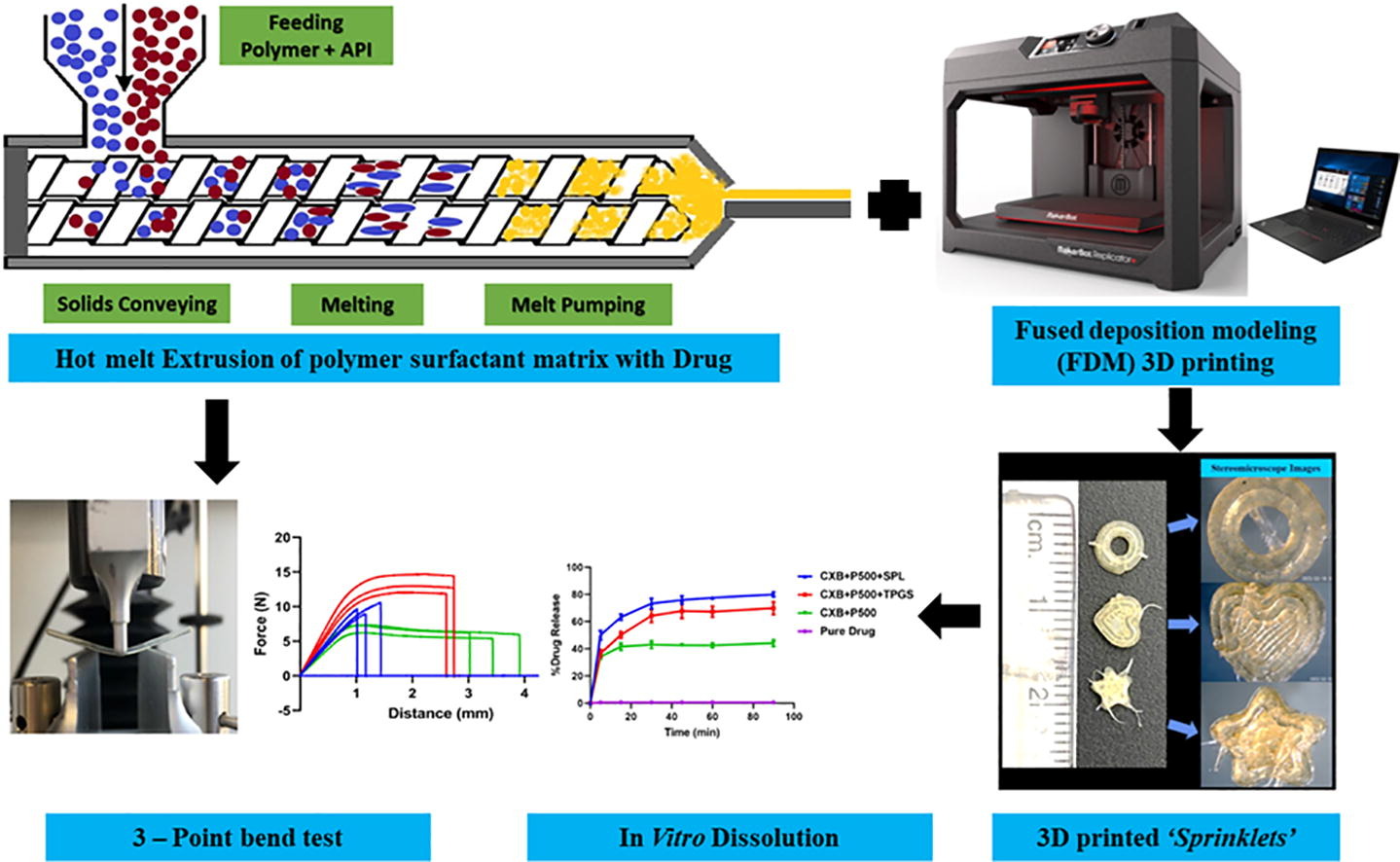Application of 3D printing technology for the development of dose adjustable geriatric and pediatric formulation of celecoxib

Abstract
Developing safe and effective formulations for the geriatric and pediatric population is a challenging task due to issues of swallowability and palatability. The lack of standardized procedures for pediatric formulations further complicates the process. Manipulating adult formulations for children can lead to suboptimal efficacy and safety concerns. To overcome these challenges, minitablets or spinklets are preferred for the geriatric and pediatric population due to their smaller size and flexible dose adjustment.
The aim of this study is the development of a 3D printed spinklets formulation of celecoxib, a nonsteroidal anti-inflammatory drug, using hot melt extrusion to address the limitations of traditional manufacturing methods. Three different formulations of celecoxib were prepared using Poly-2-ethyl-tetra-oxazoline (Aquazol) with and without surfactant. Subsequently, the mechanical properties and solubility of the drug-loaded filaments were evaluated. Solid state characterization confirmed the drug conversion into an amorphous form during the extrusion process, Computer-aided design software facilitate sprinklets design for fused deposition modeling and scanning electron microscopy assess the surface morphology.
Sophorolipids plasticize better than TPGS, resulting in lowering processing temperatures during melt extrusion. In vitro drug release showed successful enhancements in the dissolution of oral medications for pediatric patients, considering their distinctive physiological characteristics. Overall, this study demonstrates the successful development of PEtOx-based 3D printed celecoxib sprinklets by coupling hot-melt extrusion and 3D printing technology. Future exploration holds the potential to revolutionize pharmaceutical production and advance personalized medication formulations.
Read more here
Materials
Celecoxib (CXB) was purchased from AK Scientific, Inc. (Union City, California), Aquazol 500, poly(2-ethyl-2-oxazoline) (Aquazol, PETOX or PEtOx 500, P500) were generously gifted by Polymer Chemistry Innovations, Inc. (Tucson, AZ). Sophorolipids (REWOFERM® SL or SPL) was received as a gift sample from EVONIK corporation (Richmond, VA). D-alpha tocopheryl polyethylene glycol 1000 succinate (Kolliphor® TPGS or TPGS was obtained from BASF Corporation (Tarrytown, NY). Glyceryl monooleate (Capmul®).
Henis Patel, Vishvesh Raje, Paulina Maczko, Ketan Patel, Application of 3D printing technology for the development of dose adjustable geriatric and pediatric formulation of celecoxib, International Journal of Pharmaceutics, 2024, 123941, ISSN 0378-5173, https://doi.org/10.1016/j.ijpharm.2024.123941.
Watch the video below an read more on Vitamin E TPGS here:

